The long journey of mitochondrial medicine
2nd May 2016.
Massimo Zeviani, MRC Mitochondrial Biology Unit, Cambridge
The 2nd College C Milstein lecture and 2015/16 Annual lecture of the Department of Molecular Medicine will be given by Massimo Zeviani of the MRC Mitochondrial Biology Unit and University of Cambridge, UK on the 29th of April 2016 at 5.30 pm at Collegio A Volta (17 via A Ferrata, Pavia). The lecture is entitled Mitochondrial medicine: a long journey through the magic circle and beyond and the poster of the lecture can be found here. All members of the Department and other members of the academic community in Pavia, students and staff, are welcome to attend. The abstract of the lecture and a short biographical sketch are enclosed below, as supplied by the speaker.
Mitochondria are the major source of ATP that is synthesized by the respiratory chain through the process of oxidative phosphorylation (OXPHOS), a complex biochemical process carried out through the dual control of physically separated, but functionally interrelated, genomes, nuclear and mitochondrial DNAs. The genetic and biochemical intricacy of mitochondrial bioenergetics explains the extreme heterogeneity of mitochondrial disorders, a group of highly invalidating human conditions, for which no effective treatment is nowadays available. In addition to bioenergetic failure, other mechanisms are probably predominant in the pathogenesis of specific syndromes, such as alterations of cellular redox status, the production of reactive oxygen species, compromised Ca2+ homeostasis, mitochondrial protein and organelle quality control, and mitochondrial pathways of apoptosis. By investigating selected families and patients, we have identified several new disease genes, each responsible of distinct defects in the respiratory chain, mtDNA metabolism, or both, associated with paediatric or adult-onset clinical presentations. I will focus this lecture on an expanding group of disorders characterized by mtDNA instability, either sporadically occurring in critical tissues (e.g. muscle and brain) or caused by mutations in a number of different nucleus encoded genes that directly control mtDNA maintenance and replication, or are involved in the mitochondrial quality control system.
Massimo Zeviani graduated cum laude in Medicine at the University of Padua. He specialised in Endocrinology and Neurology, and obtained a PhD in Genetics at the University René Descartes in Paris. In 1984, he moved to Columbia University, New York, where he worked as a post-doc for five years with Billi Di Mauro on the biochemical and molecular definition of respiratory chain disorders. In 1990, he became Assistant and then Associate in Neurology at the Department of Biochemistry and Genetics of the Istituto Neurologico “C. Besta” in Milan where he organized a laboratory of molecular biology on mitochondrial disorders. In 2001 he became the director of the Unit of Molecular Neurogenetics and, in 2011 he became the director of the Department of Molecular Medicine of the same Institute. In January 2013, he was appointed Director of the MRC Mitochondrial Biology Unit in Cambridge, UK. In June 2013, he was awarded the Grand Prix of the NRJ Foundation, Paris, for “Genetics of degenerative diseases”. Author of ≈300 scientific publications in peer-reviewed journals (H index 70), he has identified and characterized numerous disease genes associated with OXPHOS defects, contributing to the elucidation of the molecular pathogenesis of mitochondrial disorders. More recently he focused on the development of therapeutic approaches to treat these conditions in experimental models and, eventually, patients.
Iron-Sulphur Cluster Biogenesis
2nd May 2016.
Salvatore Adinolfi, King's College London
On Monday the 2nd of May 2016, Salvatore Adinolfi, a Senior Lecturer and Group Leader at the Maurice Wohl institute for Neuroscience of King’s College London will give a seminar entitled Fe-S cluster biogenesis. A complex issue in the Unit of Immunology and General Pathology on the ground floor of the Golgi/Spallanzani Building (9, via Ferrata). The poster of the seminar can be downloaded here. All interested participants are welcome.
Abstract. Friedreich’s ataxia is the most common inherited recessive ataxia. It is associated with reduced levels of frataxin, a small mitochondrial protein of still unclear function. Independent reports have linked frataxin to iron-sulphur cluster assembly through interactions with the two central components of this machinery, the desulphurase Nfs1/IscS and the scaffold protein Isu/IscU. We have characterized the interaction of CyaY (the bacterial orthologue of frataxin) with the IscS/IscU complex and studied the effect on the enzymatic kinetics of cluster formation on the scaffold protein IscU. A single molecule of CyaY binds IscS in a pocket between the active site and the IscS dimer interface through electrostatic interactions of complementary charged residues. Cyay binding leads to a regulation of the desulfurase activity of IscS. We propose that frataxins act as sensors in the regulation of iron-sulfur cluster formation to fine-tune the quantity of cluster formed to the concentration of the available acceptors.
Biography. S Adinolfi graduated at the “Federico II” University in Naples where he started his career with the Centro Nazionale Ricerche (CNR). Subsequently he won a Postdoc fellowship to learn molecular biology techniques at the EMBL in Heidelberg and then moved to UK with a position at the National Institute for Medical Research in London where he was involved meanly in investigating the molecular mechanism underlying genetic diseases. Recently has been granted an independent position at the King’s College London at the Maurice Wohl institute for Neuroscience.
Reference. Adinolfi S et al. Bacterial frataxin CyaY is the gatekeeper of iron-sulfur cluster formation catalyzed by IscS. Nat Struct Mol Biol 16:390-6 (2009) doi:10.1038/nsmb.1579.
Image courtesy of http://sbkb.org/fs/iron-sulfur-cluster-biosynthesis. The image shows the major proteins of the bacterial Isc operon involved in iron-sulphur biogenesis. A similar system builds iron-sulfur clusters in the mitochondria of eukaryotic cells.
Medical Training in the United Kingdom
15th October 2015.
Wendy Reid, Health Education England
Wendy Reid, Director of Health Education England will give a seminar at 6.00 pm on October 15th on Working and Training as a Doctor in the United Kingdom (UK). The poster of the seminar can be downloaded here.
The aging of the population and an increase in the resources available to the National Health Service has meart that the UK has recently attracted a significant number of young medical graduates. In her talk W Reid will explain the procedures for admissiont of foreign medical graduates to UK hospital for training and work. All interested medical students are invited to participate.
Image: Hammersmith Hospital in London, the site of a distinguished postgraduate medical school, now part of Imperial College
Research Assessment in Italy
The third seminar of the College series on Research Assessment will be given by Raffealla Rumiati on Monday the 6th of February at 6.00 pm in the College lecture theatre. Raffaella Rumiati, a psychologist by training, is a Director of Research at Scuola Internazionale Superiore di Studi Avanzati (SISSA) in Trieste and Vice President of the Agenzia Nazionale di Valutazione del Sistema Universitario e della Ricerca (ANVUR).
Research assessment is relatively recent in the Italian scene and has been met with mixed feelings by the Italian academic community. R Rumiati will narrate the story of Research Assessment South of the Alps and will offer a perspective of its future directions.
All College students are invited to attend this and the other seminars of this important series. Further details about the series and R Rumiatu's seminar can be found on the dedicated seminar page. The poster of the seminar can be downloaded here. The poster of the seminar series can be downloaded here. The seminar will be streamed at: http://smarturl.it/CollegioVoltaStream
Image: A portrait of Italian scientist Galileo Galilei.
The Experience of Research Exercises in Italy
6th February 2017.
Raffaella Rumiati, Scuola Internazionale Superiore di Studi Avanzati (SISSA), Trieste
and Agenzia Nazionale di Valutazione del Sistema Universitario e della Ricerca (ANVUR)
Venue and time: College lecture theatre, 6.00 pm. The poster of the seminar can be downloaded here. The poster of the series can be downloaded here. The seminar will be streamed at: http://smarturl.it/CollegioVoltaStream
Introduction
Over the last two and half centuries research has transformed from the endeavour of a few and wealthy gentlemen to a resource intensive and institutionalised enterprise, largely sustained by tax payer money. This seminar series contrasts different procedures of research assessment in use in several European countries in the search for new or improved methodology. Starting from the mid 1980s, however, several countries have began questioning the return from investment in research and devised procedures for research assessment in the name of accountability. Thirty years on there is broad agreement that research funded by the public ought to be assessed, but little consensus about the methodology to be employed. This seminar series contrasts different procedures of research assessment in use in several European countries in the search for new or improved methodology.
Abstract
(by RI Rumiati and M Malgarini)
The ‘Agenzia Nazionale per la Valutazione del sistema Universitario e della Ricerca’ (ANVUR) is responsible for evaluating universities and research institutes in Italy. ANVUR bears a wide range of responsibilities including the evaluation of research and quality assurance, of the impact and of the learning outcomes. Of these roles, the evaluation exercise is probably the one that has received more attention for it is linked to incentives that the Italian Ministry of University and Education (MIUR) grants to the universities in the yearly budget. Historically, these evaluation exercises have been based on peer review methods. More recently, there has been a growing tendency to adopt bibliometric indicators, at least for STEM areas. To date there have been two research evaluation exercises (Valutazione della Qualità della Ricerca or VQR in short), one related to the period 2004-10, the other that has just closed now concerning the period 2011-2014. The 2004-10 VQR has analyzed almost 185,000 articles, books, patents, and other scientific outcomes submitted for evaluation by Italian universities and other public research bodies. Fourteen areas of research were considered for each of which ANVUR selected a group of evaluation experts (Gruppo di Esperti Valutatori, GEV), for a total of 450 experts. The methodology adopted for such evaluation was based on a combination of peer review and bibliometric methods, based on indicators concerning the number of citations received by individual papers and the impact factor of the journal in which they are published.
More specifically, bibliometric indicators have been applied to mathematics, natural sciences, engineering and life sciences and, albeit with a slightly different approach, in economics and statistics; for humanities and social sciences evaluation has been accomplished by relying only upon peer evaluation. Bibliometric evaluation was based on a combined use of article-level and journal-level metrics; wherever the two metrics provided converging results (i.e., when both indicators assigned an article to the same class of merit), bibliometric evaluation will be intended as conclusive, before being finally approved by the GEV. However, when the two metrics ended up in different classes of merit, the GEV assigned a specific weight to the two indicators in order to decide the final class of merit to be assigned to the article. For instance, in the areas characterized by slow accumulation of citations, a predominant weight was assigned to journal-level metrics, while the opposite was true for areas characterized by more frequent citation practices. Similarly, evaluation of more recent articles, for which the citations count may still be considered as inconclusive, relies more heavily on journal-level metrics, while the opposite is true for articles published at the beginning of the evaluation period. If article-level and journal level metrics were considered to be “too” far apart (usually when they differ by more than two classes of merit), the GEV peer reviewed the article, either internally or assigning it to an external reviewers. External reviewers were selected on the basis of an external list of experts in the field; the list was carefully crafted on the basis of an ex-ante scientific accreditation and taking into consideration possible conflicts of interest. Peer evaluation was based on a pre-determined evaluation form, containing specific questions based on the evaluation criteria described above; the reviewer also provided a final brief comment explaining the choice made concerning the class of merit assigned to the article.
Full professors, associate professors and assistant professors, affiliated to a research universities and institutes, took part in this exercise by submitting three research outcomes, including books, books chapters, articles and other products (among which are patents, databases, works of art, architectonic projects and others). Departments and Universities are therefore evaluated within homogeneous scientific areas on the basis of the number of research outcomes submitted and the corresponding scores. Only results at the level of departments and universities are made public while individual researcher’s output is restituted privately.
The 2011-14 VQR was performed adopting by and large the same methodology as in the first exercise. However some novelties were inserted. First, 16 GEV were nominated each for each research area, for a total of 400. Second, Italian faculty submitted two research outcomes, whereas each researcher from research center submitted three outcomes. In order to be considered for evaluation they had to possess an ORCID identifier. Finally, the bibliometric algorithm used in STEM areas has been enhanced in order to better calibrate the distribution of research outcomes into the evaluation classes defined in the Ministerial decree. Overall, over 118,000 research outcomes have been evaluated. Evaluation has been based on criteria such as originality, methodological rigor and scientific (actual or potential) impact. Each GEV defined specific evaluation criteria for each Area. The analysis of each research outcome resulted in a synthetic appraisement of its scientific merit, across five levels: excellent, high, fair, acceptable, and limited, with score being been assigned to each level of merit (respectively equal to 1; 0,7; 0,4; 0,2; 0).
Evaluation methods. Evaluation is based on the method of informed peer review: wherever possible, peer evaluation has been supported by bibliometric information stemming from the two main databases available worldwide (ISI-Web of Science and Scopus); specifically, information about the scientific impact of both the articles (as expressed by the number of citations) and the journal in which they are published in (as expressed by the Impact Factor © and other similar indicators) have been used in the evaluation. Bibliometric indicators were duly normalized, in the widely agreed assumption that citational practices differ significantly across type of publication, scientific field and year of publication. No automatic evaluation has taken place, with the final assessment concerning the scientific merit of a publication always falling under the responsibility of the GEV. At any rate, more than 50% of publications has been evaluated purely with peer review methods.
For the 2011-14 VQR, results of the evaluation of research products accounted for 75% of the global evaluation of Universities and Departments; another 20% of the total score will be based on the quality of publications of researchers that has been hired or promoted during the period 2011-14: in this way, evaluation also takes into account the ability that the Italian Universities showed in selecting researchers with the higher scientific impact and quality. A final 5% of the final score reflects the competitive fundings granted to Universities and their higher education activities (doctoral programs). On an experimental basis, ANVUR has also been elaborating a system of indicators supporting the peer review of impact activities, related to scientific transfer and building of social capital; results of the experimentation will be presented in the final VQR report, however will not translate into monetary incentive as yet. In conclusion the final goal of the research exercise consists in evaluating the quality of the research carried out in the Italian Universities, and to rank them and their Departments in each of the 16 areas of evaluation. In times of growing political pressure to control public finances, it becomes increasingly important to ensure that expenditures are cost-effective and capable of reaching their objectives.
Biographical sketch
Raffaella I Rumiati obtained an MSc in Philosophy with Psychology curriculum in 1990, and a Doctorate in Psychology in 1995 (both from the University of Bologna). The research towards Doctorate was carried out at the School of Psychology of Birmingham University UK for 4 years, focusing on the interface between perception and action, a field in which she has been working until now. After completing the Doctorate she moved to the International School of Advanced Studies (SISSA) in Trieste where from a postdoctoral position she moved up to a full professorship in cognitive neuroscience in 2011. To date she has about 130 publications mostly peer-reviewed articles, but also reviews, commentaries and book chapters. She was the recipient of the “von Humboldt Foundation” Bessel Prize in 2003, and of the Women in Cognitive Science Mentorship Award in 2006. She is an editor for Brain and Cognition and Cortex, and a member of the board of Cognitive Neuropsychology and acts as a reviewer for many journals as well as funding agencies. About gave about 80 invited talks in Italy and abroad and spent some working periods abroad (e.g., U.K., Japan, Germany). During 20 year in SISSA she had several organizational roles including head of the PhD in Cognitive Neuroscience, head of the SISSA’s Ethics Committee, member of SISSA’s Board of Governors, and member of the Academic Senate. From November 2016 she joined ANVUR, of which she is vice-president.
Image: A drawing of eminent Italian scientist Alessandro Volta, after whom this College is named and the battery he invented.
LaTeX Course
Collegio Giasone del Maino is organising a LaTeX Course starting on February 16th and running until the 11th of April. The Course includes 10 lessons/practicals and will be offered by Gianluca Favre, a College alumnus.
LaTeX was developed in the US by computer scientist Leslie Lamport and is the de fact standard for the preparation of scientific and engineering documents. The course offered by Gianluca Favre and organised by Collegio Giasone del Maino is a wonderful opportunity for the students of Volta who wish or need to use LaTeX for writing their dissertation or research papers and I strongly encourage the students of Volta to take advantage of this opportunity. The full programme and calendar of the Course is available here.
Chest Examination and Lung Ultrasound
20th January 2017.
Carmelo Sgarlata, University of Pavia and Collegio A Volta.
Abstract
Acute dyspnea is one of the most frequent symptoms between patients admitted to the emergency department constituting a leading cause of hospitalization in internal medicine wards. The accurate and prompt identification of the etiology of the dyspnea is a critical factor in order to establish aeffective treatment and to improve clinical outcomes representing an open challenge for the internist daily engaged in the care of high clinically complex patients. Characteristics such as advanced age, multiple comorbidities and lack of cooperation are very common and can often significantly reduce not only the usefulness of physical examination but also the diagnostic accuracy of conventional imaging diagnostic technique such as chest radiography and CT scan. Numerous and solid evidences validated the effectiveness of lung ultrasound in the differential diagnosis of acute dyspnea and this sonographic technique showed a high diagnostic accuracy in many pathological conditions including diseases extremely frequent in internal medicine such as congestive heart failure and pneumonia. Lung ultrasound is very useful also in the uncooperative patient (aggressive, dementia etc) overcoming in this context conventional radiology. In these two seminars I will discuss advances in both physical examination of the chest and lung ultrasound principles and execution and its utility in the differential diagnosis of acute dyspnea in the internistic patient.
All interested students from College and outside, are welcome to attend. The poster of the talk can be downloaded here. The slides of the seminar on physical examination can be found here. The slides of the seminar on lung ultrasound can be found here.
References
[1] Cardinale L, Volpicelli G, Binello F, et al. Clinical application of lung ultrasound in patients with acute dyspnea: differential diagnosis between cardiogenic and pulmonary causes. Radiol Med 2009;114(7):1053-64.
[2] Sgarlata C, Guerriero F, Rollone M, Carbone M, & Magnani L. Lung ultrasound: clinical utility in uncooperative patients with psychomotor agitation and suspected pneumonia. It J Med 10(s2),107 (2016)
Biographical sketch
I’m a medical doctor and my work is actually focused on diagnosis and treatment of diseases in the area of internal medicine and geriatrics with particular regard to cardiovascular and neurodegenerative disease. I’ve also a great interest in the use of diagnostic ultrasound in internal medicine. I studied Medicine at Volta as an undergraduate graduating in July 2012 then I remained in residence afterward as a resident in Geriatrics. I’ve been secretary of the Volta Medical Society throughout the academic year 2013/14. I’m author of about 60 scientific publications on national and international journals and speaker at various conferences of national importance.
Acid-base balance
16th December 2016.
Carmelo Sgarlata, University of Pavia and Collegio A Volta.
Abstract
The seminar will tackle the use of blood gas analysis in medicine focusing both on its practical execution that on its clinical interpretation. Blood gas analysis is a low cost, little invasive and rapidly performed technique which provides an immediate and useful response to those who are able to interpret its results. The test provides very useful information regarding both respiratory and metabolic pathology. The partial pressure of carbon dioxide, bicarbonate concentrations, and pH values indicates the presence or absence of primary or mixed respiratory and metabolic acidoses or alkaloses. The partial pressure of oxygen will reveal abnormalities in the oxygen content of blood and the presence or absence of hypoxemia. In addition to that the test provides precious additional data very useful as the Hb and plasma electrolyte values. I will discuss the practical execution of this test and its clinical interpretation with practical examples in the most common real clinical settings. All interested students from College and outside, are welcome to attend.
Abstract (Italian):
Il seminario affronterà l’utilizzo dell’analisi dei gas ematici in medicina focalizzandosi sia sull’esecuzione pratica di tale esame che sulla sua interpretazione. L’emogas analisi è una tecnica poco costosa, scarsamente invasiva ed eseguita rapidamente in grado di fornire una risposta utile ed immediata a tutti coloro che sono in grado di interpretarne i risultati. L’esame fornisce informazioni molto utili riguarda sia le patologie respiratoria che metaboliche. La pressione parziale della CO2, la concentrazione die bicarbonati, i valori del pH sono dati in grado di indicare la presenza o l’assenza di acidosi o alcalosi respiratorie e metaboliche sia isolate che in forme miste. La pressione parziale di ossigeno può rivelare anormalità del contenuto di ossigeno del sangue e definire la presenza o assenza di uno stato di ipossiemia. In aggiunta a ciò l’esame fornisce preziose informazioni aggiuntive come i valori di emoglobina e degli elettroliti plasmatici. Discuterò l’esecuzione pratica di questo esame a la sua interpretazione clinica con esempi pratici nei contesti clinici di più frequente riscontro.
The slides of the seminar can be found here.
References
Dev SP et al. Arterial puncture for blood gas analysis. N Engl J Med 364(5):e7 (2011)
Biographical sketch
I’m a medical doctor and my work is actually focused on diagnosis and treatment of diseases in the area of internal medicine and geriatrics with particular regard to cardiovascular and neurodegenerative disease. I’ve also a great interest in the use of diagnostic ultrasound in internal medicine. I studied Medicine at Volta as an undergraduate graduating in July 2012 then I remained in residence afterward as a resident in Geriatrics. I’ve been secretary of the Volta Medical Society throughout the academic year 2013/14. I’m author of about 60 scientific publications on national and international journals and speaker at various conferences of national importance.
Image: Immunolfuorescence of a kidney cell line (MDCK). Courtesy of https://micro.magnet.fsu.edu/primer/techniques/fluorescence/gallery/cells/mdck/mdckcells.html
Chest Medicine
The 4th and 5th of 6 College teaching seminars offfered during the academic year 2016/17 by Carmelo Sgarlata, a medical postgraduate and member of Volta, will take place on Friday the 20th of Janruary in the College lecture theatre at 6.00 pm.
All College medical students are strongly invited to attend. The poster and abstract of one of the two seminars can be found here where the slides of the actual seminars can also be found. Carmelo's teaching page is here. Image: Courtesy of Intensive Care Medicine and Intensive Care Ultrasound.
Darpins
Fabio Andres, a PhD student in Andreas Pluckthun's laboratory at the Institute of Biochemistry of the University of Zurich will give a seminar tomorrow in the Unit of Immunology and General Pathology of the Department of Molecular Medicine in Pavia entitled Darpins.
Darpins are artificial proteins built upon one of the structural elements of ankyrins, a complex and widespread protein family that connect a number of membrane proteins to the cytoskeleton. F Andrtes will describe work demonstrating the darpins can be engineered in the laboratory to bind defined therapeutic targets and will exemplify this strategy with recent studies on the structure and activity of darpins targeting the receptor tyrosine kinase MET.
All College medical students are strongly invited to attend. The abstract of the talk and Fabio's biographical sketch can be found here. The poster of the seminar can be downloaded here.
More...
Acid Base Balance
The 3rd of 6 College teaching seminars offfered during the academic year 2016/17 by Carmelo Sgarlata, a medical postgraduate and member of Volta, will take place on Friday the 16th of November in the College lecture theatre at 6.00 pm.
All College medical students are strongly invited to attend. The abstract of the talk and Carmelo's biographical sketch can be found here where the slides of the actual seminars can also be found. Carmelo's teaching page is here. Image: Courtesy of Brown D et al. Am J Physiol 302:C1421-C1433 (2012)
Darpins
19th January 2017.
Fabio Andres, University of Zurich.
Abstract
Designed Ankyrin Repeat Proteins (DARPins) represent a promising alternative to other protein scaffolds such as antibodies in order to generate highly specific binders to any desired molecule. The modular structure and the very high stability of these proteins enable them to be applied to powerful selection technologies based on directed evolution and offer vast possibilities for protein engineering. Here, we used in-vitro directed evolution (Ribosome Display) of DARPins and a comprehensive epitope screening approach to develop bi-specific molecules binding to the Hepatocyte Growth Factor Receptor (c-MET) on cancer cells which show considerable inhibition of tumor cell growth.
All College students are invited to attend. The poster of the seminar can be downloaded here.
Biographical sketch
F Andres studied Biology and Biochemistry at the Department of Biochemistry in Zurich. After the Masters degree, he worked for the Roche Diagnostics company in Rotkreuz (central Switzerland). In 2011 he moved to the University of Zurich for a PhD, working on the development of novel protein-based therapeutic molecules for cancer therapy in Andreas Puckthun's laboratory.
Personal Wifi Networks
Carlo Grignani, Finance Director of EDiSU, has informed all EDiSU Colleges that several appear to have installed 'personal' wifi networks in their College rooms. Copy of C Grignani's letter can be downloaded here.
This practice is forbidden and students should rely on the general College-wide network for their work. Students of Volta are also aware that College is keen to provide effective internet access and that they should promptly report any problem about IT support directly to College.
Research Strategy and Assessment in Germany
5th December 2016.
Stefan Hornbostel, Deutsches Zentrum für Hochschul- und Wissenschaftsforschung (DZHW) and Humboldt-Universität zu Berlin
Venue and time: College lecture theatre, 5.00 pm. The poster of the seminar can be downloaded here. The seminar will be streamed at: http://smarturl.it/CollegioVoltaStream
Introduction
Over the last two and half centuries research has transformed from the endeavour of a few and wealthy gentlemen to a resource intensive and institutionalised enterprise, largely sustained by tax payer money. This seminar series contrasts different procedures of research assessment in use in several European countries in the search for new or improved methodology. Starting from the mid 1980s, however, several countries have began questioning the return from investment in research and devised procedures for research assessment in the name of accountability. Thirty years on there is broad agreement that research funded by the public ought to be assessed, but little consensus about the methodology to be employed. This seminar series contrasts different procedures of research assessment in use in several European countries in the search for new or improved methodology.
Abstract
The Federal Republic of Germany does not dispose of a single nationwide and uniform system of research assessment procedures, but, according to the variety of its federal states, of a multitude of practices. The German situation therefore differs profoundly from that in other European states, such as the United Kingdom with its Research Excellence Framework (REF). In his talk, Stefan Hornbostel will give an overview of the most relevant procedures in existence in Germany and analyze their embedment in the research system. He will thus shed light on the structure and the financing of the German research system which is characterized by its specific binary organization into research at higher education institutions and research at non-universitarian research institutes. By means of bibliometric analysis he will look at the effects of national funding programs such as the German Excellence Initiative on the research system and place his findings in an international context.
Biographical sketch
Stefan Hornbostel was born in 1955 in Hannover, Germany. He graduated in Social Sciences in 1982 and received his PhD. from Freie Universität Berlin in 1995. He started his career at the Research Centre for Occupational and Higher Education Research, now called International Centre for Research on Higher Education (INCHER). He worked at the Universities of Cologne and Jena and at the latter he assisted in starting the Department of Sociology. He was a scientific referee at the Centre of Higher Education Development (CHE) before he was appointed to a professorship at the Institute for Sociology at the University of Dortmund. Since 2005, he is a Full Professor at the Department of Social Sciences at the Humboldt-Universität zu Berlin. From 2005 to 2015 he served as Director of the Institute for Research Information and Quality Assurance (iFQ) which provided information and analyses of developments and transformations in the German and international science system. He is currently Director of the area on Research Systems and Science Dynamics at the German Centre for Higher Education Research and Science Studies (DZHW). His broad research interests comprise bibliometrics, evaluation and assessment practices, sociology of elites and science studies. Stefan Hornbostel has been responsible for several significant studies, among them the Competence Centre for Bibliometrics, funded since 2008 by the German Federal Ministry of Education and Research, and the Research Core Dataset. He was – amongst others - member of the advisory boards of the Alexander von Humboldt-Foundation, of the Leibniz Institute for the Social Sciences (GESIS), of the Foundation board of evalag (Accreditation Agency), different sections of the German Council of Science and Humanities.
Image: German physicist Albert Einstein, arguably the most influential scientist of the 20th century.
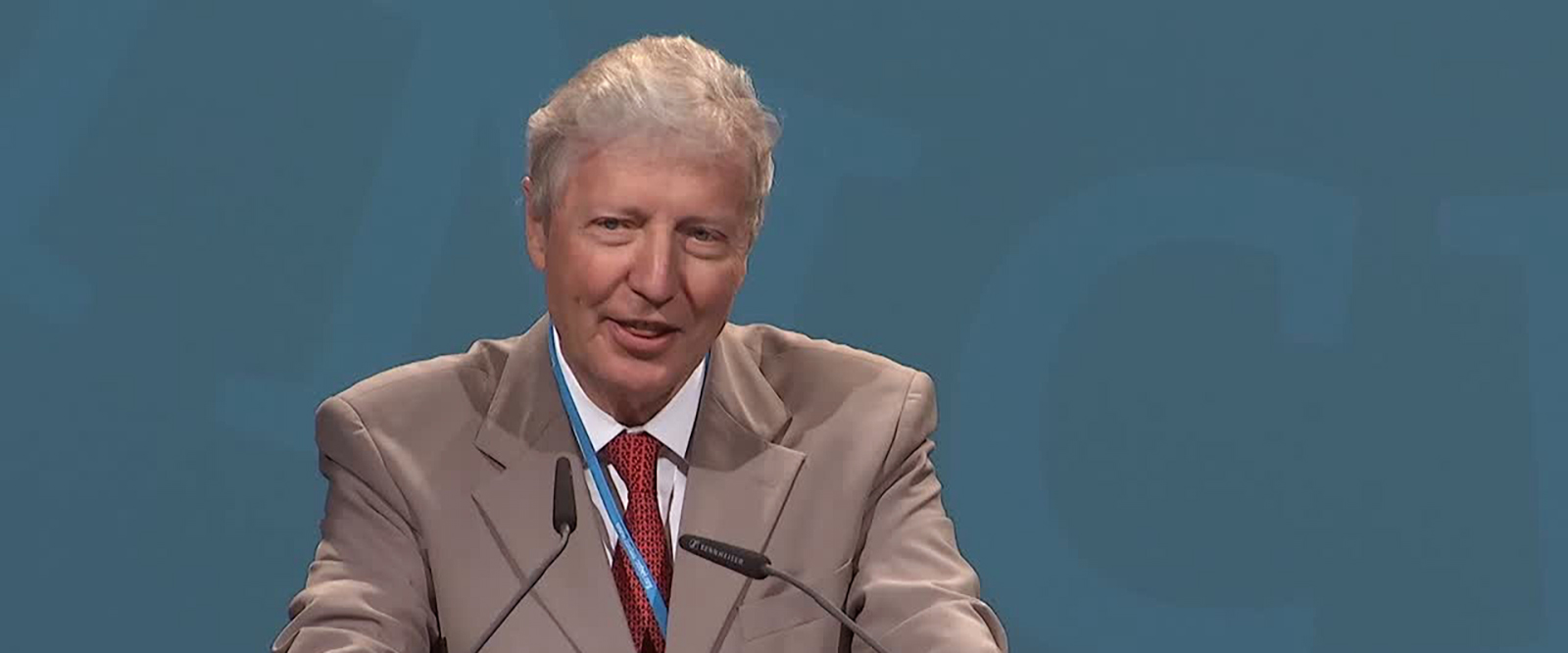
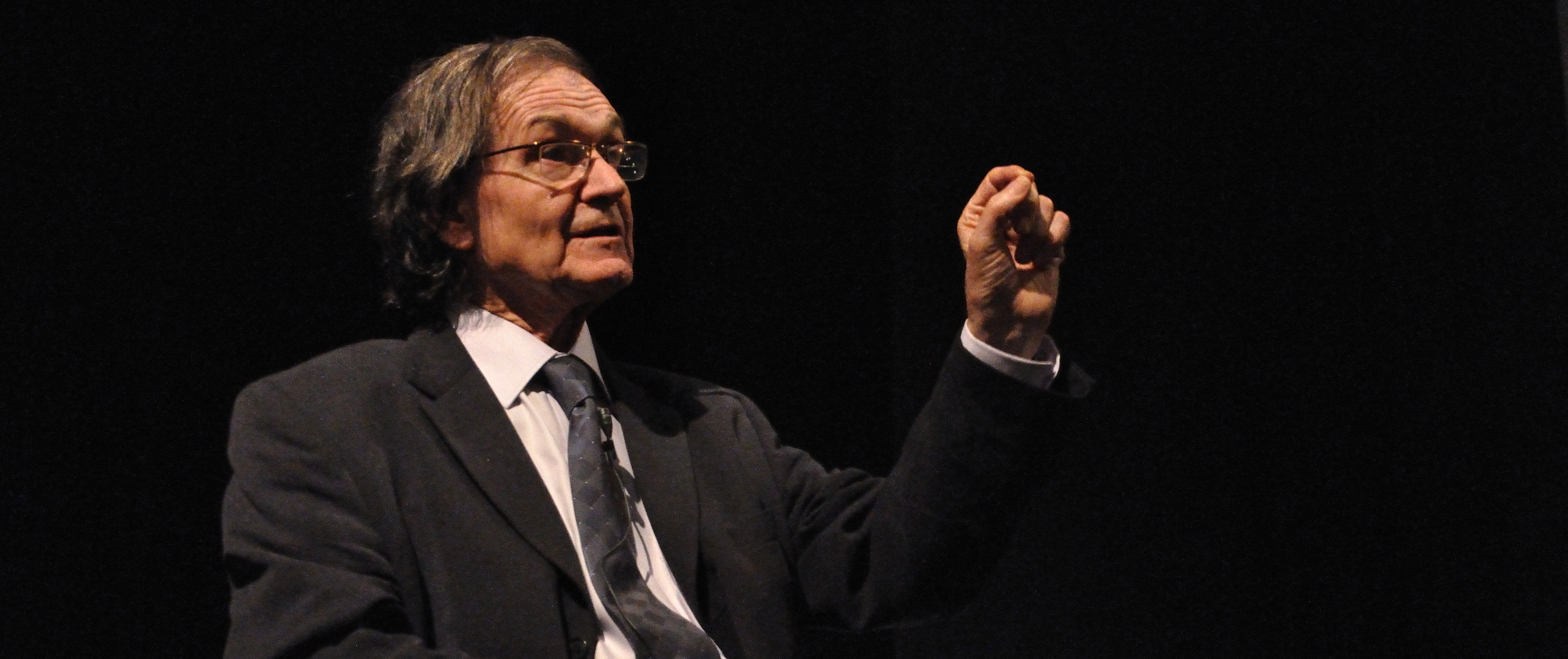
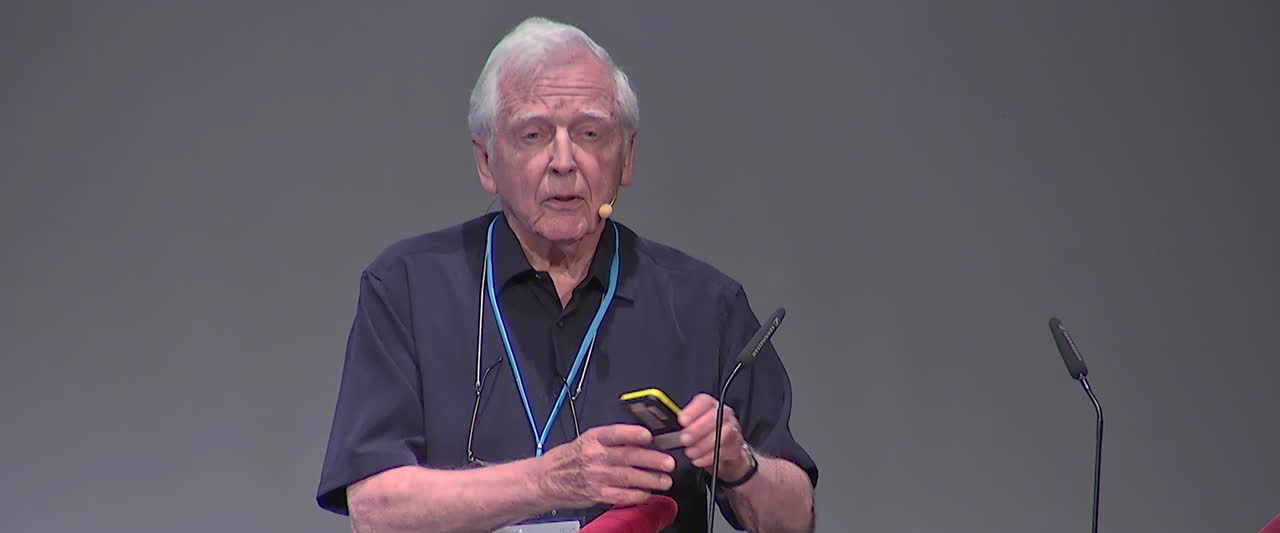
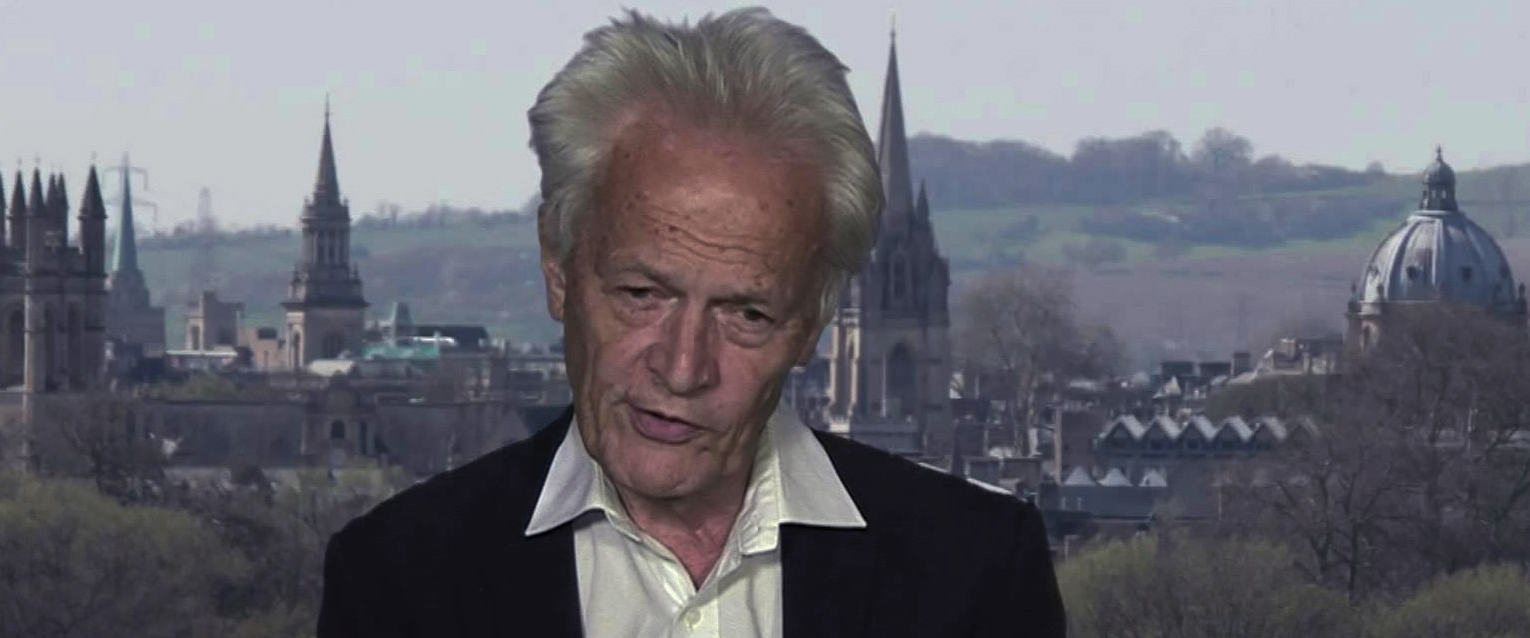

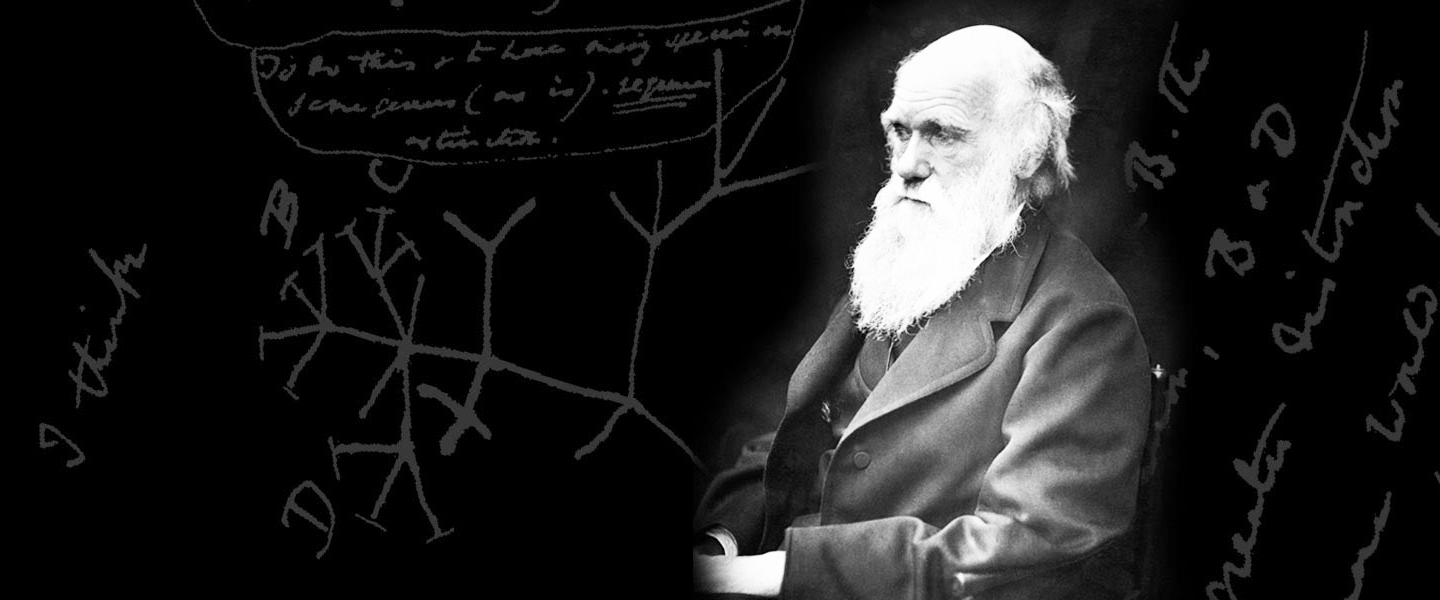



















 Articles
Articles